- Remove Article filter Article
- Remove Archaeology filter Archaeology
- Remove Livelihood and Craftsmanship filter Livelihood and Craftsmanship
- Remove Industry, Energy and Natural Resources filter Industry, Energy and Natural Resources
- Remove People and Society filter People and Society
- Remove Arkeologi filter Arkeologi
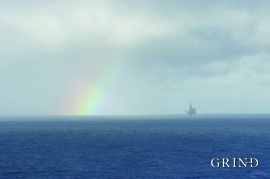
Petroleum riches off the coast of Hordaland
Already in the 1750s, Erik Pontioppidan fantasized about the possibility of petroleum in the North Sea, in "Forsøg til Norges naturlige Historie" (= Studies of Norway's Natural History) "The North Sea’s oiliness is, next to its saltiness, a remarkable feature. It can be expected that in the sea, as on land, there lie hidden some oil seepages or petroleum flows, naphtha, schist-oil and other bituminous and oily liquids”. More than 200 years were to pass before these predictions came true. In recent years, an unbelievable 120,000 cubic metres of oil and 70 million cubic metres of gas are pumped up from the Oseberg and Troll reservoirs every day. This fairy tale is being played out less than 80 kilometres from the coast of Hordaland, which is not further than that one could see the oil platforms from the coastal mountains on a clear day.

Sailing Sloops and Boat Building
Marine activities expanded greatly throughout the 19th century, and provided a livelihood for many people. Fishing and shipping were probably the subsidiary activities which had greatest economic significance throughout the century. Marine activities brought, literally speaking, wind into the sails of many rural districts in Hordaland during that period.
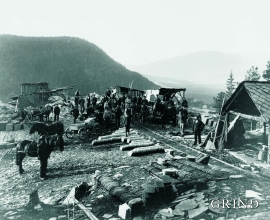
Stone quarry in Hordaland
Hordaland has been through several "Stone Ages". The first was in the real Stone Age, with Bømlo as its centre. Hard stone as tools and weapons was the normal occupation for Bømlo folk. The next started a ways into the 1800s. Building stone and cobblestones in the street became popular in cities throughout the country. The last stone age is just about twenty years old - after a long period of dominance by asphalt and cement, natural stone has again become desirable in streets and squares, in roads and as building facades.

The bedrock of western Norway
Much is hidden from us, but we know some of the main features in the history behind the different rock types and minerals that surround us. The Hordaland we experience today is the result of an exciting and sometimes dramatic geological history over many hundreds of millions of years - a result that is important for Hordaland: The bedrock influences the soil types and lays down the cultural foundation, by determining the possibilities for mining, quarrying slate, building stone and gravel for roads, and, not least, where we find mountains, valleys and fjords.

The Fjord- a blue lung
The West Coast of Norway, with its deep fjords that carve far into the high mountains, is one of the most characteristic and - many would say - beautiful landscapes in Europe. It is not without reason that tourists come from around the world each year to see the fjords of Norway.
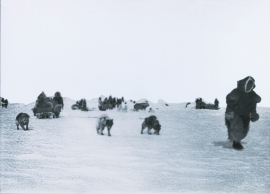
The forgotten saga
The saga regarding the settlement of Hordaland started off about 10,000 years ago. Most of this saga has been recorded in writing, not on paper, but on stone and on the earth in the forest and the marshes.
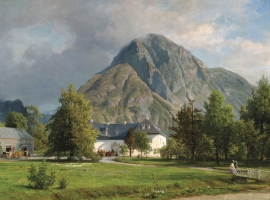
The Great Landowners, Gentry and Monasteries
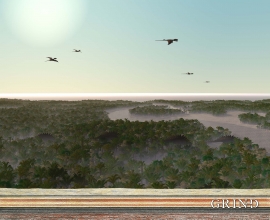
The mountain chain disappears – and the dinosaurs arrive!
The Caledonian mountain chain is an example of how plate movements and continental drift can cause collisions and the upheaval of huge mountain chains. After the horizontal compressional forces ceased, the forces of gravity, wind and water took over and started the process of eroding away the mountain chain. But, nearer to our time the land rose up again to a plateau landscape in the east which slanted down toward the ocean in the west!

The Norwegian Language Movement and the Two High Cultures
The year 1849 was the breakthrough year for the National Romantic movement in Norway. It was in that year that Ole Bull, the renowned fiddler brought the Millerboy from Telemark to the concert hall in the capital.
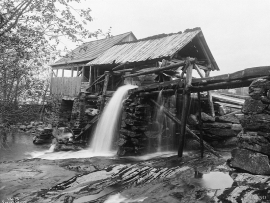
The Pine Forest, the Sash Saw and the Scots Trade


